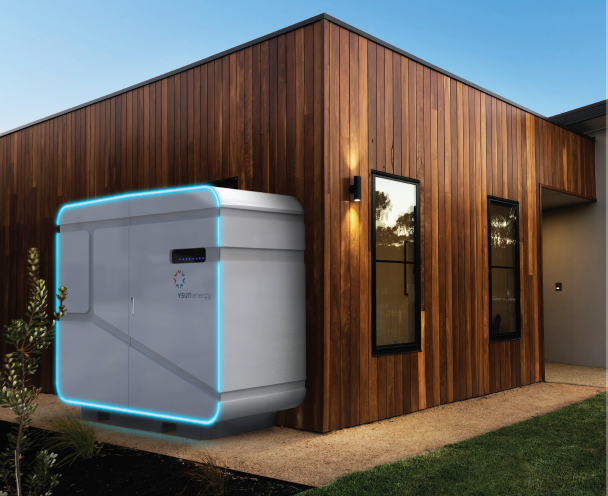Australia’s Aspiring Upstream Vanadium Flow Battery Players Take Steps Forward

Ahead of an expected uptick in demand for vanadium redox flow batteries (VRFB) for stationary energy storage applications, two companies on opposite sides of Australia have claimed milestones in their go-to-market strategies.
Vecco Group, developing a vanadium mine project in Queensland, northeastern Australia, has found a technology partner for what it claimed will be the country’s first commercial-scale vanadium electrolyte manufacturing facility. The company has partnered with C-Tech Innovation, a technology company from the UK which makes electrochemical equipment for making vanadium electrolyte.
The facility in South-East Queensland would have 2 million litres annual production capacity and would be fed with high purity vanadium from Vecco Group’s Debella Project. Debella is located in a part of Queensland rich in mineral resources and already known for mining.
Vecco is targeting initial production in 2023. The new factory’s annual capacity would equate to about 30MWh of VRFB electrolyte, but the company plans to scale that up to 300MWh. It has also signed a partnership with China’s Shanghai Electric on building the factory, Vecco said in April, with Shanghai Electric signing a 10MWh off-take deal.
C-Tech claimed to have developed a direct one-step process of electrochemical reduction that is a cleaner alternative to conventional manufacturing, without requiring chemical reducing agents.
In a recent interview, Maria Skyllas-Kazacos, University of New South Wales emeritus professor and one of the original inventors of the vanadium flow battery, told Energy-Storage.news that the electrolyte is by far the most expensive part of the system.
Producers targeting various levels of vertical integration
Building production capacity in proximity to local demand will likely be an important factor in cost reduction, while vertical integration offers vanadium companies the best opportunity to capture the maximum value for their materials.
For instance, a 200MWh vanadium electrolyte plant is under construction in South Africa by Bushveld Minerals, one of only four primary vanadium producers already operating in the world today (about 80% of vanadium used by industries like aerospace and construction is not extracted from the ground but instead comes as a by-product of steel production).
Bushveld CEO Fortune Mojapelo told this site that with South Africa’s integrated resource plan (IRP) targeting 10,000MW of renewable energy capacity and 2,000MW of battery storage, as well as many industrial entities that need reliable power and are seeking to self-generate with renewable energy, it is important to get in on the ground early where markets are developing.
Similarly, on the western side of Australia, a vanadium mine project is being developed by Australian Vanadium (AVL), which also has a subsidiary marketing VRFB systems and recently signed a partnership to license vanadium electrolyte production technology from US Vanadium.
AVL said this week that test work at its Australian Vanadium Project mining site has indicated higher vanadium and iron concentrate grades than was originally expected. At the beginning of this month three VRFBs of 5kW/ 30kWh each were shipped from the company’s manufacturing partner V-Flow Tech in Singapore, for installation by VSUN Energy.
Australian Vanadium also received a grant for AU$3.9 million (US$2.83 million) earlier this year to fast-track its manufacturing capabilities from the Australian government Modern Manufacturing Initiative.
US Vanadium itself recently said it will be producing more than 2 million litres of electrolyte annually at its facility in Arkansas in response to demand. The company is doing this in partnership with Austrian flow battery maker CellCube, which recently ordered 580,000 litres of electrolyte from US Vanadium to equip an 8MWh microgrid project for an unnamed industrial customer in the US.
www.energy-storage.news


